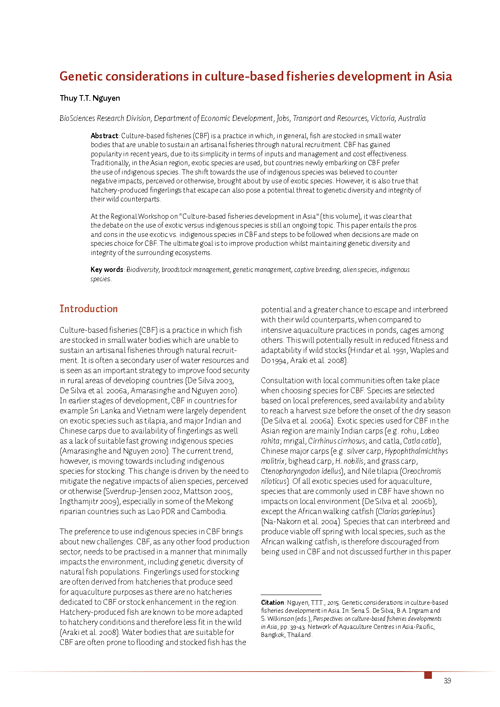Genetic considerations in culture-based fisheries development in Asia
12 May 2015 | T.T.T. Nguyen | 1173 Downloads | .pdf | 105.6 KB | Culture-based fisheries, Genetics and Biodiversity
Culture-based fisheries (CBF) is a practice in which, in general, fish are stocked in small water bodies that are unable to sustain an artisanal fisheries through natural recruitment. CBF has gained popularity in recent years, due to its simplicity in terms of inputs and management and cost effectiveness. Traditionally, in the Asian region, exotic species are used, but countries newly embarking on CBF prefer the use of indigenous species. The shift towards the use of indigenous species was believed to counter negative impacts, perceived or otherwise, brought about by use of exotic species. However, it is also true that hatchery-produced fingerlings that escape can also pose a potential threat to genetic diversity and integrity of their wild counterparts.
At the Regional Workshop on “Culture-based fisheries development in Asia” (this volume), it was clear that the debate on the use of exotic versus indigenous species is still an ongoing topic. This paper entails the pros and cons in the use exotic vs. indigenous species in CBF and steps to be followed when decisions are made on species choice for CBF. The ultimate goal is to improve production whilst maintaining genetic diversity and integrity of the surrounding ecosystems.
Creative Commons Attribution.

